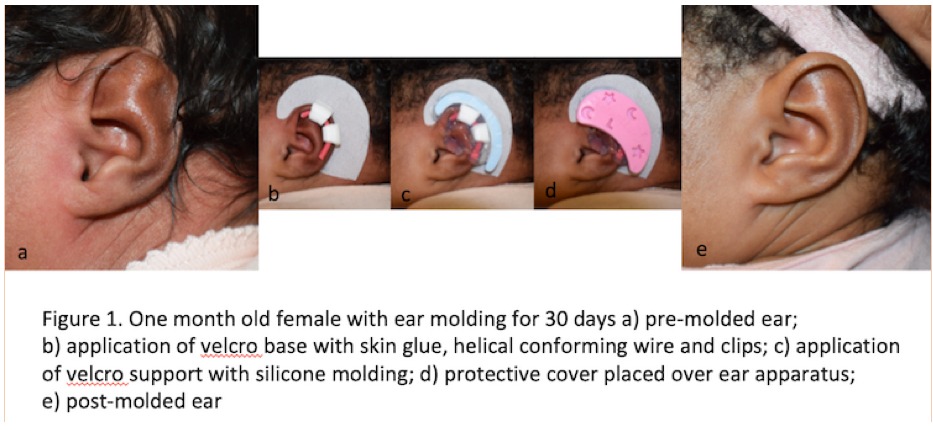Layperson's Perception of Helical Rim Deformities Corrected with Ear Molding
Viren Patel1, Daniel Mazzaferro1, Anthony Azzolini2, Jordan Swanson2, Jesse Taylor2, Scott Bartlett2.
1Perelman School of Medicine at the University of Pennsylvania, Philadelphia, PA, USA, 2Children's Hospital of Philadelphia, Philadelphia, PA, USA.
Introduction & Objectives: Among neonatal ear deformities, helical rim deformities are the most frequent. The emergence of nonsurgical ear molding appears to offer distinct advantages not only in the temporal nature of the correction, but in the final result. The purpose of this review was to examine consecutive series of patients treated non-surgically and determine how the general public rates these corrections. Material & Methods: A retrospective chart review of the last 55 consecutive patients with helical rim deformities treated with InfantEarTM Non-surgical Ear Molding System. Patient demographics included age, sex, duration of therapy and number of treatment applications. Amazon Mechanical Turk (MTurk) was used to survey blinded respondents using photographs of patients’ ears to determine the degree of normalcy for each ear on a scale of 1 (not normal) to 10 (completely normal) before versus after molding. The ratings of ears before and after molding were compared using a paired t-test and percent improvement. Results: A total of 59 ears were identified and 602 individual ratings were collected. The majority of patients were male (52 percent). Average age of patients’ ears at time of treatment was 34.2±16.8 days and mean duration therapy was 31.3±13.1 days. A paired t-test analysis found that MTurk respondents identified significant improvement in 91.5 percent of ears (n=54) (p<0.05). The percent improvement in observed helical rim change was on average 84.0±59.8 percent. Conclusion: Early treatment of helical rim deformities with ear molding is safe, effective and well tolerated and has become the method of choice in the treatment of these abnormalities. Crowdsourcing technology offers an opportunity to measure laypeople’s perceptions of ear molding outcomes. Application of the device and clinical results will be shown (Figure 1). 
Back to 2019 Abstracts
